LET'S TAKE A LOOK UNDER THE PINES
I had to leave my car in the repair shop just outside my hometown on the 3rd of October 2022. I also had to wait a couple of hours for things to be done there, so I went exploring the nearby pine grove in search of whatever nature has to offer in that area.
In this contribution to #FungiFriday by @ewkaw, I'll show you what I found on that occasion. The emphasis is on mushrooms, of course.
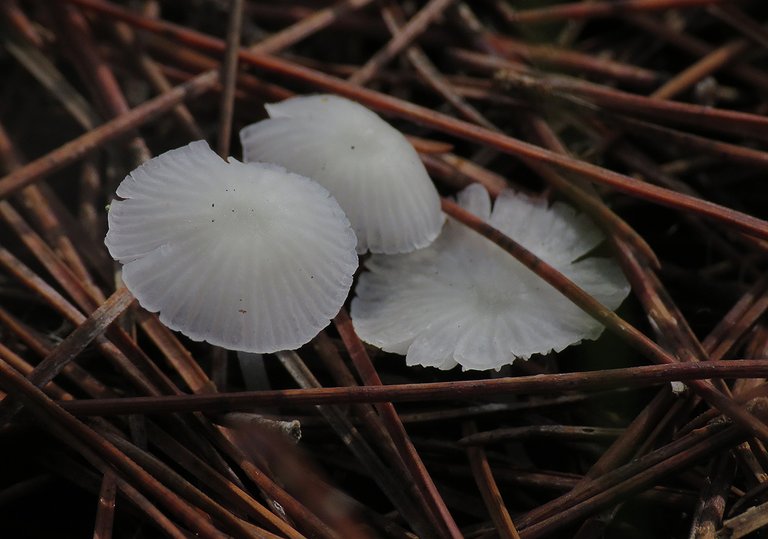
Fortunately, I had the macro lens with me ...
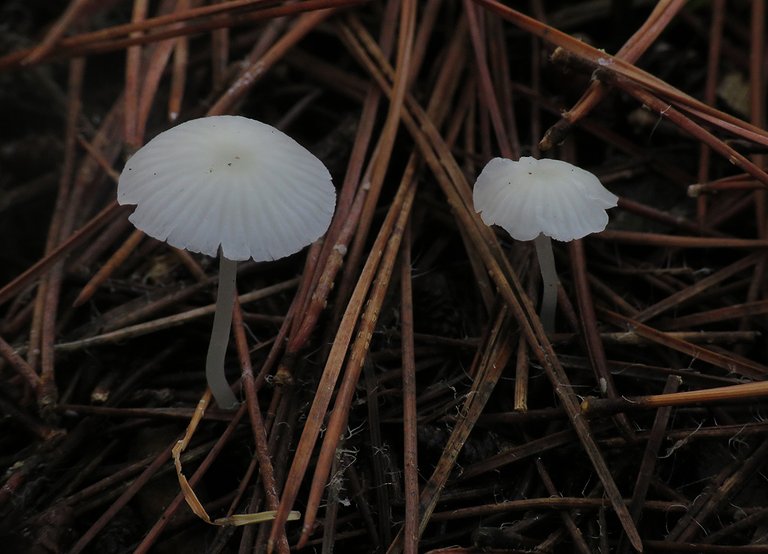
... so I was able to get some fairly good portraits of these small gracile mushrooms that grow on the layer of rotting needles fallen from the trees.
The name of the species is Marasmius calhouniae.
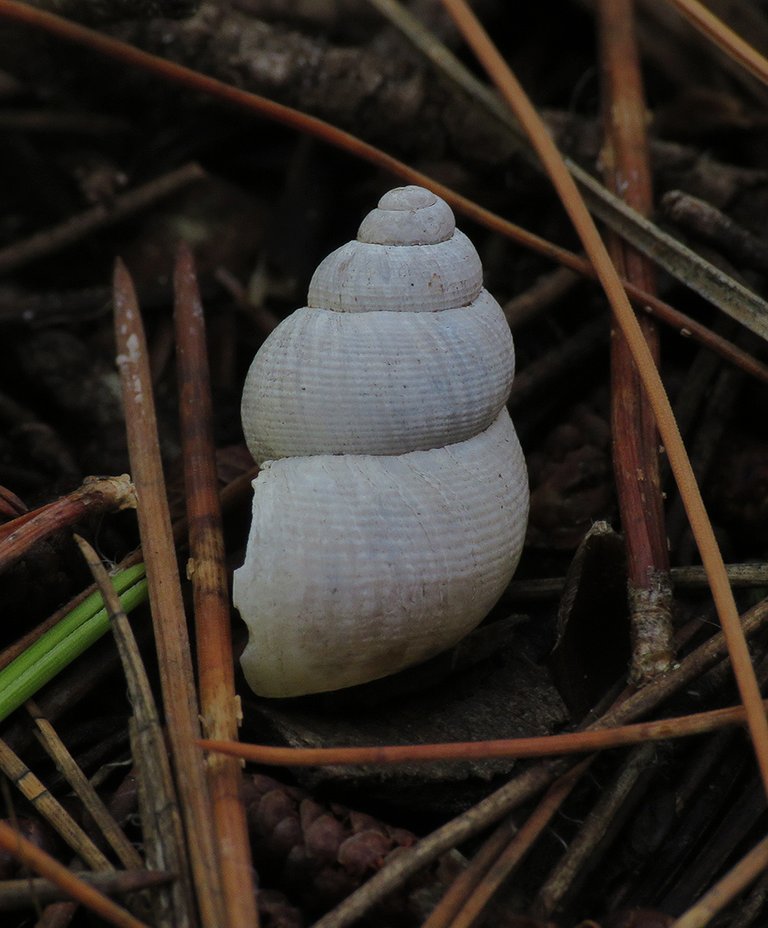
Near the ghostly white mushrooms, I found a ghostly white shell with no snail inside. This is a shell of the Pomatias elegans, a land snail from the Pomatiidae family.
If you enlarge this photograph by clicking on it, it will be easier to see the small Marasmius calhouniae that shares the pine cone with the much bigger Mycena Seynesii mushroom.
Marasmius calhouniae grows mainly on needles, but fruiting bodies can also be seen on rotting twigs and cones sometimes.
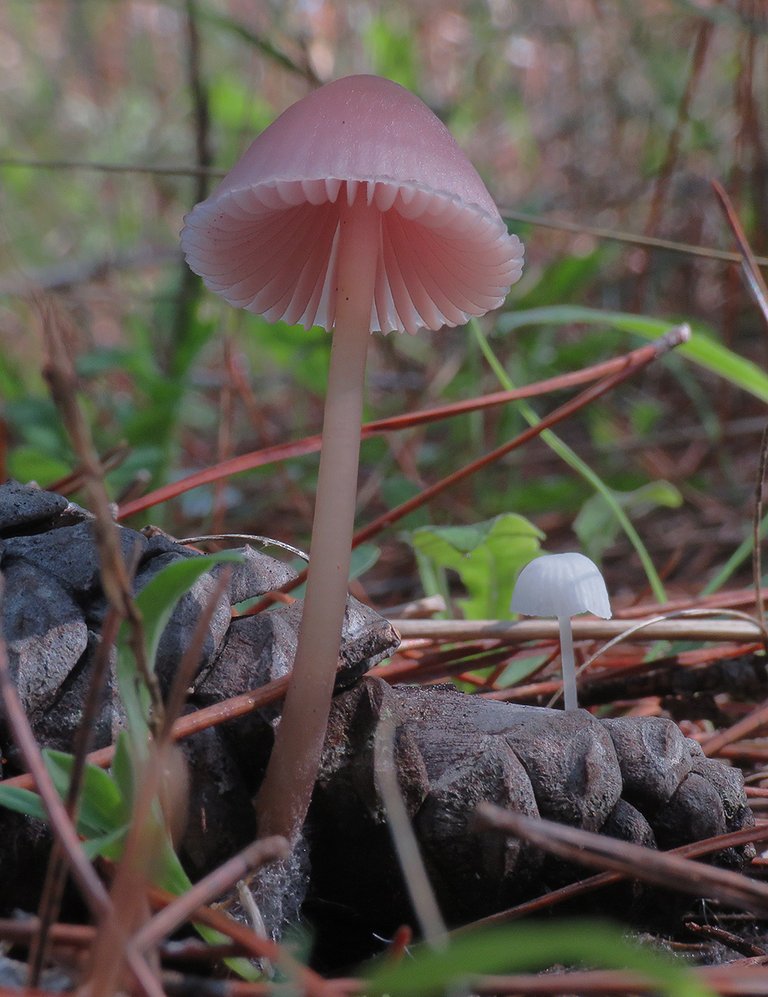
Here you can see the same two mushrooms in a slightly different shot taken by using only ambient light.
In early autumn, you can always find plenty of Mycena Seynesii mushrooms in a grove like this.
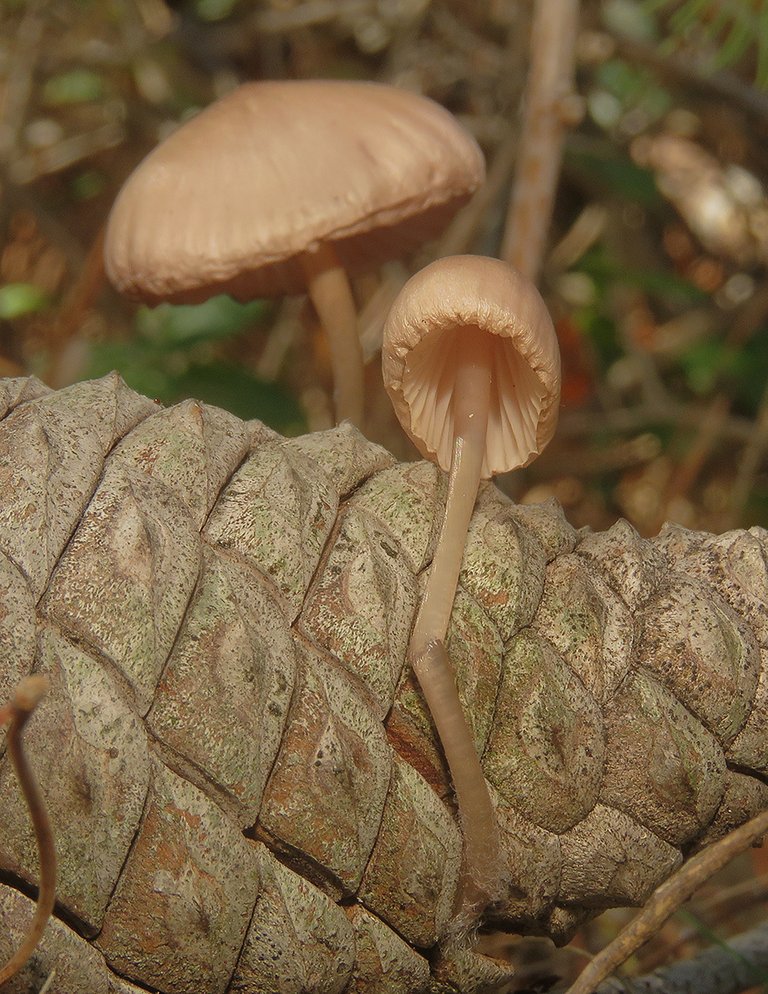
They can be seen on pine cones in various stages of decay. These two slightly withered mushrooms grew on a cone that is still in relatively good shape.
Here you can see a mushroom on the partially dissolved come still attached to the rotting piece of branch that fell from the pine.
By breaking down lignin and cellulose through the metabolic process, the fungus accelerates the decomposition of the cones.
At first sight, it looks like these two fruiting bodies have come out from the soil. But that's an illusion. They are attached to an old cone buried under a layer of needles.
In this wide shot, you can take a look at the trees and the general atmosphere in the grove. It was a warm, sunny day that came after the slightly colder rainy night.
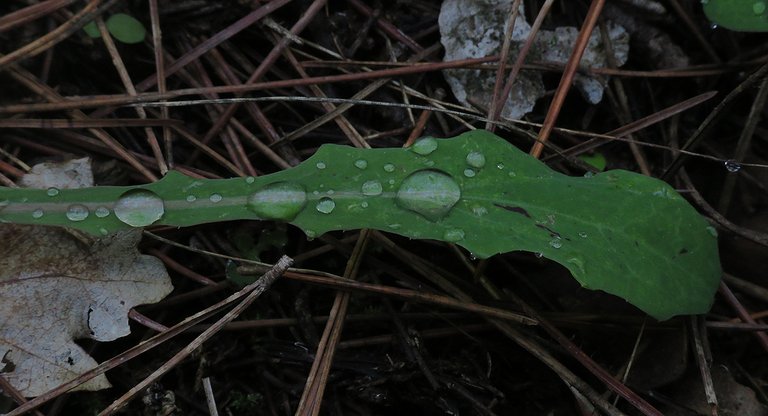
In some shady places, the plants were still sparsely decorated with droplets.
This Pieris rapae butterfly was caught basking in the sun.
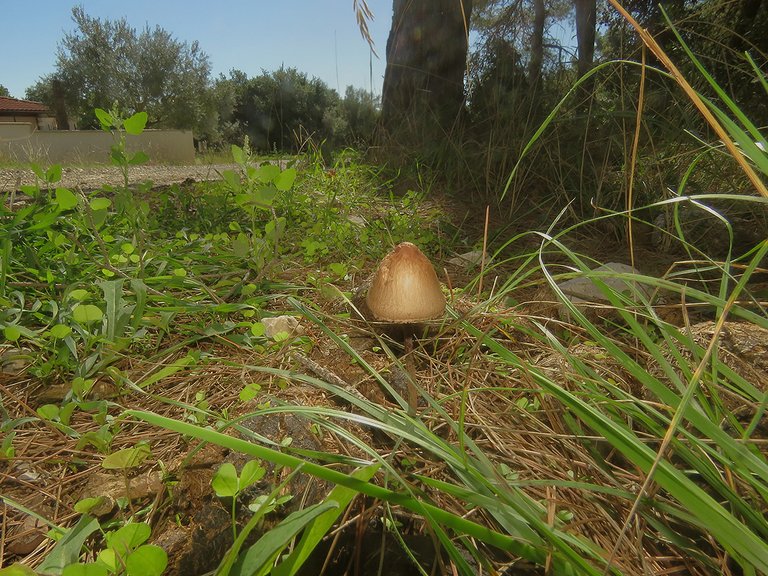
At one point, on the edge of the grove, near the unpaved road that leads to a couple of houses and the car repair shop, I came across a mushroom with a very interesting cap.
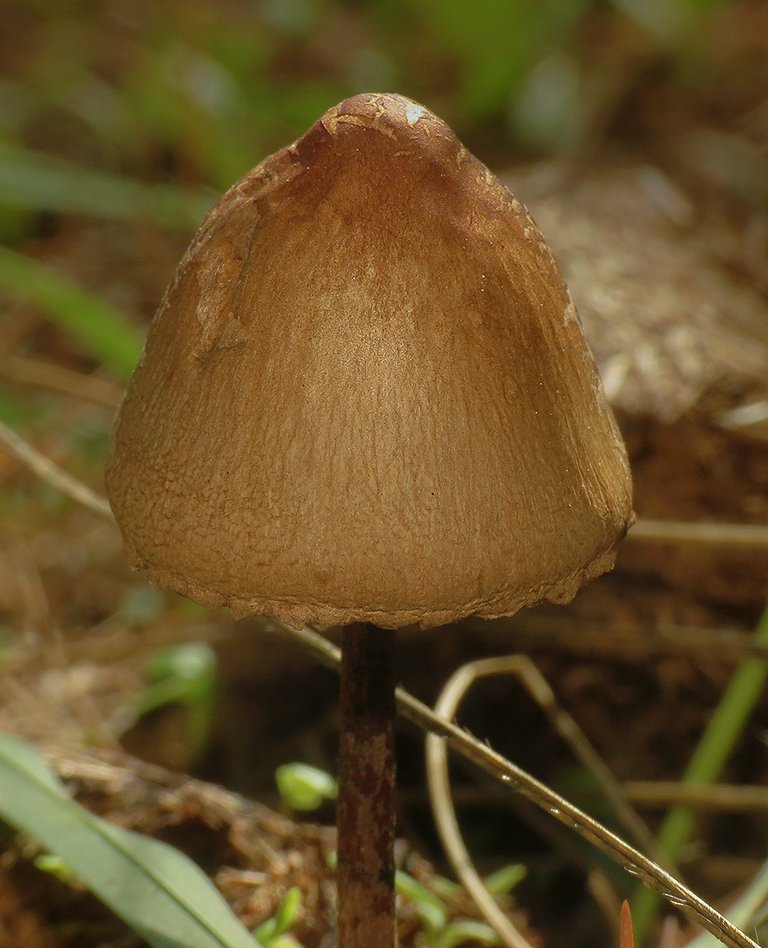
Half of the cap was uniformly brown and fairly smooth ...
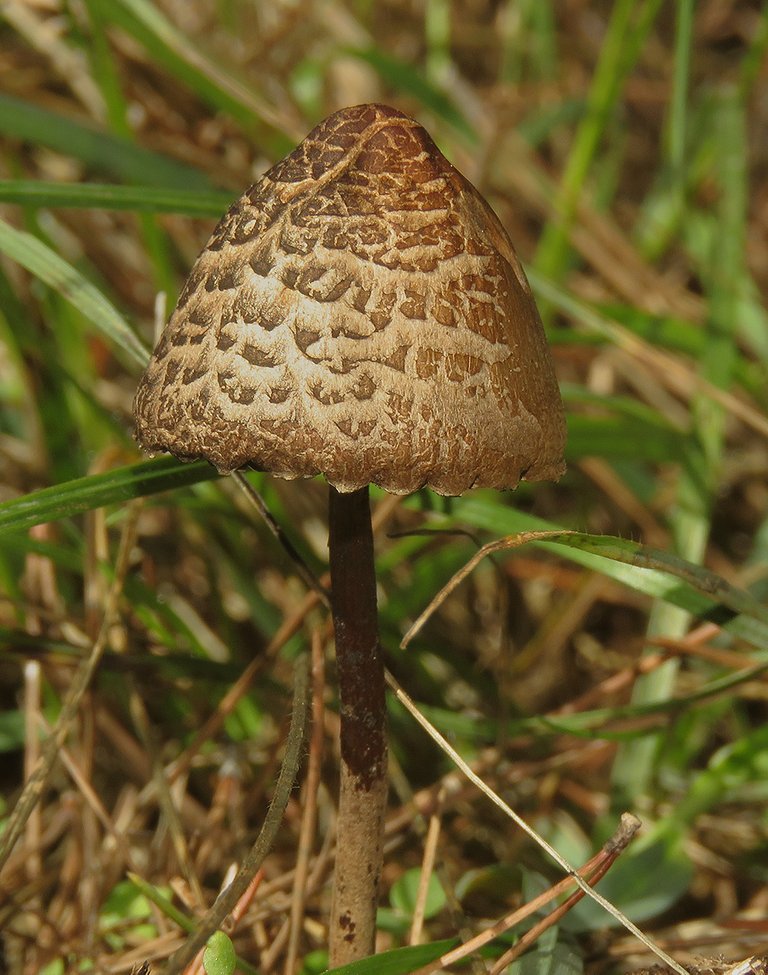
... while the other half looked like something from a different mushroom. From a small Macrolepiota procera, for example.
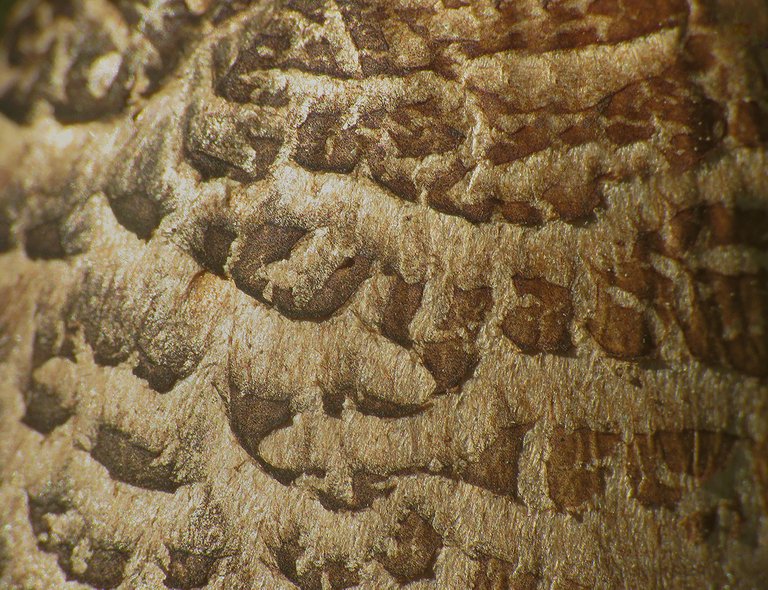
Here you can take a better look at that pattern. The photograph was taken through the macro lens.
The mushroom grew on the horse dung. Panaeolus papilionaceus is the name of the species.
After photographing the mushroom, I used the macro lens to explore the small young plants scattered across the dung.
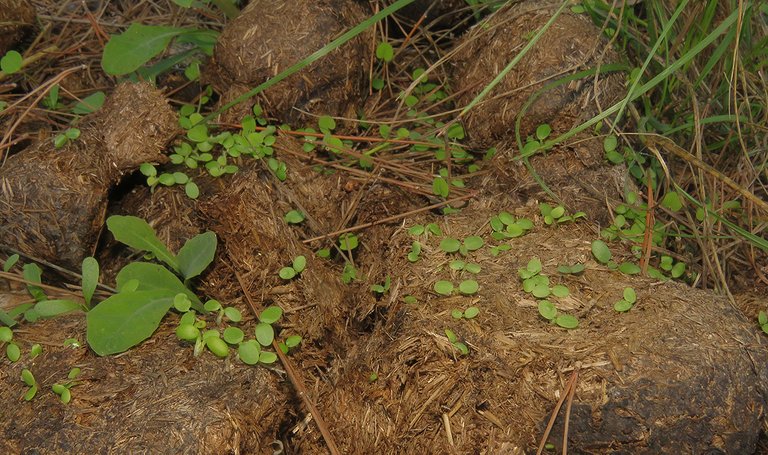
That dung by the side of the road ended up being a surprisingly interesting pile of horseshit, and a great addition to this post.
The mushrooms shown in this enlargeable photograph, have grown among the branches that someone cut down while cleaning a terrain on the edge of the area covered with pines.
The mushrooms have grown among and under piled branches and that pile was overgrown with tall grass. They were well hidden in a dark and humid place.
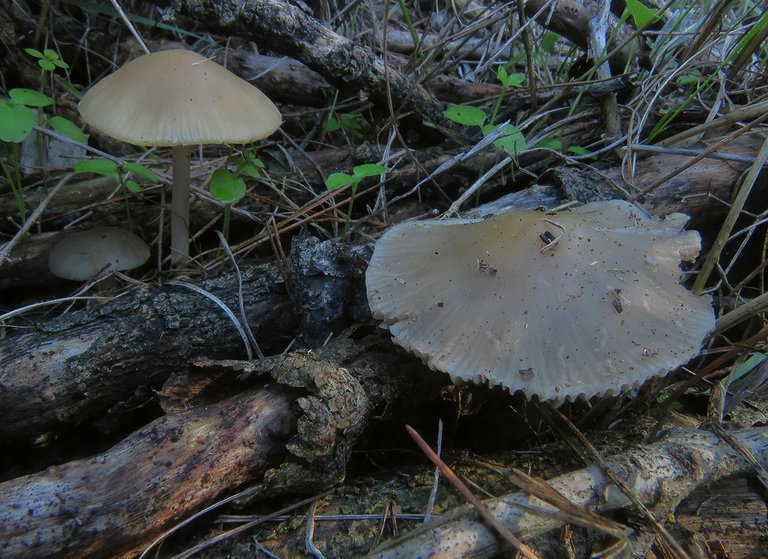
I saw quite a few mushrooms there. More than ten surely. But I photographed only this small group that I had to uncover to get this shot. I had to move some branches and the grass, destroying the ideal habitat for the mushrooms in the process. When it comes to the name of the species, I can't tell you that. But I'm pretty sure that these are some mushrooms from the genus Hydropus of the Marasmiaceae family.
This plant, the Oxalis articulata, was also photographed on the open terrain just outside the grove.

I found this lovely droplet on one of its leaves.
Some minutes later, in the grove again ...
... after taking a portrait of yet another Mycena Seynesii ...
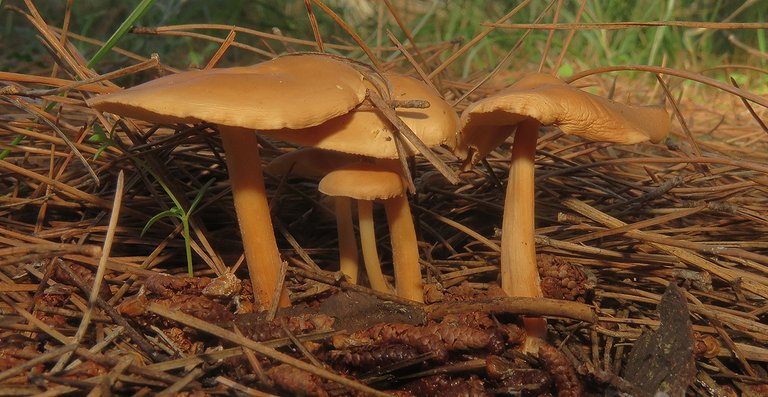
... I came across Gymnopus dryophilus mushrooms. You can see a group of them here.
This Gymnopus dryophilus trio was photographed in the same area. Under another pine. As the branches of the tree were swaying in the wind, the mushrooms were going in and out of the shade.

In this wide shot, you can take a look at the surroundings, at the small clearing covered with a thick layer of needles fallen from the surrounding pines.
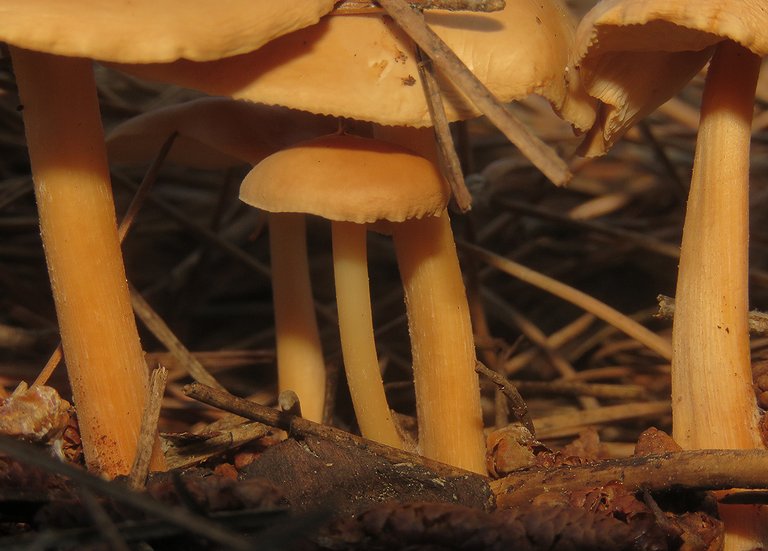
Here I zoomed in on the smallest fruiting body in the group.
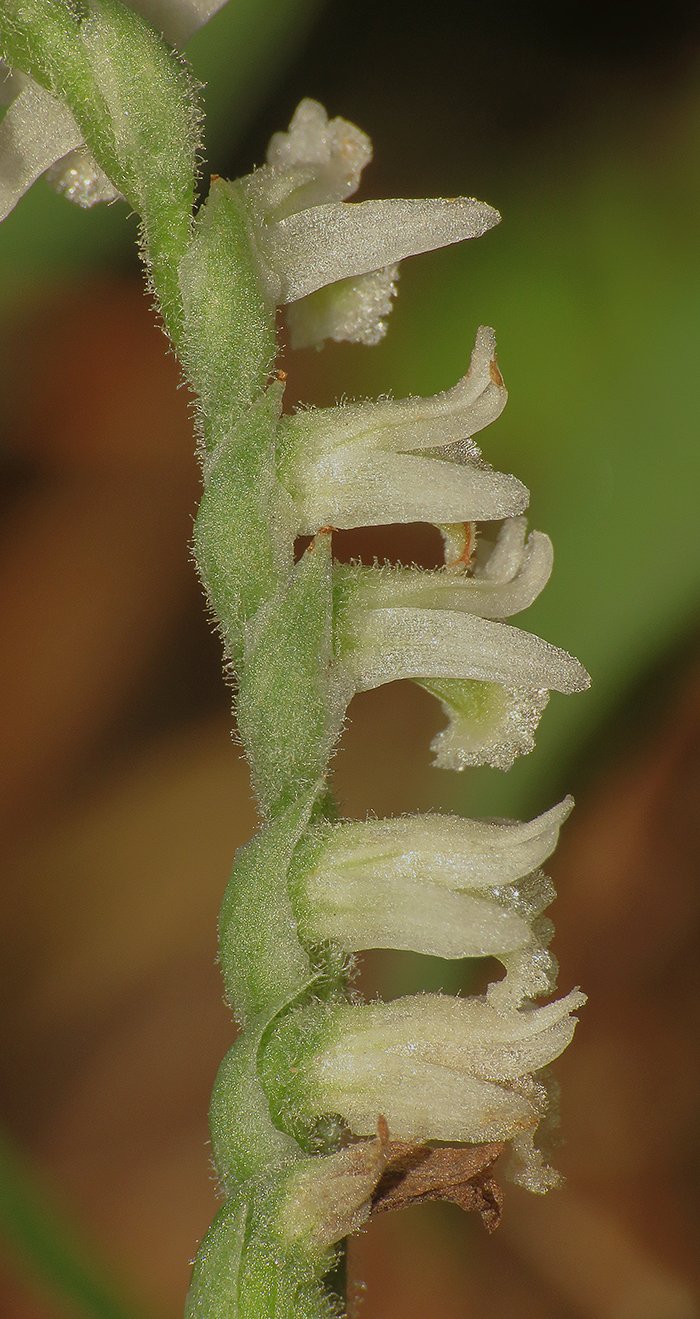
These small flowers ...
... of the Spiranthes spiralis plant, were photographed about fifty meters further, more or less in the middle of the grove.
Spiranthes spiralis is an orchid, but since its flowers are very small ...
... it doesn't look like any other orchid from this area when seen from a distance. Only through the macro lens are the flowers clearly recognizable as tiny orchids.
This Entoloma sericeum was found and photographed nearby.
Here you can take a good look at the gills under the cap.
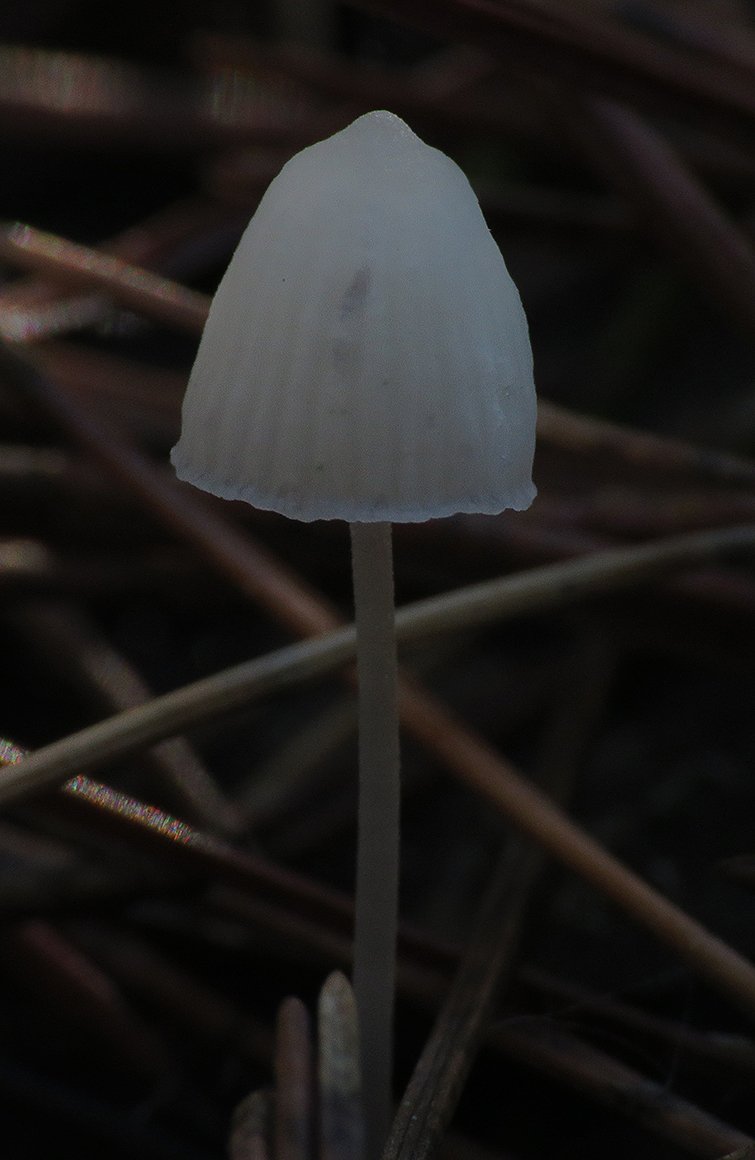
A meter or two from there, I photographed another Marasmius calhouniae. Just like the Mycena Seynesii, they were very numerous under the pines.
On the way back to the chair repair shop, I stopped in the open terrain just outside the pine grove to photograph two more mushrooms. I mean, two more species, more precisely.
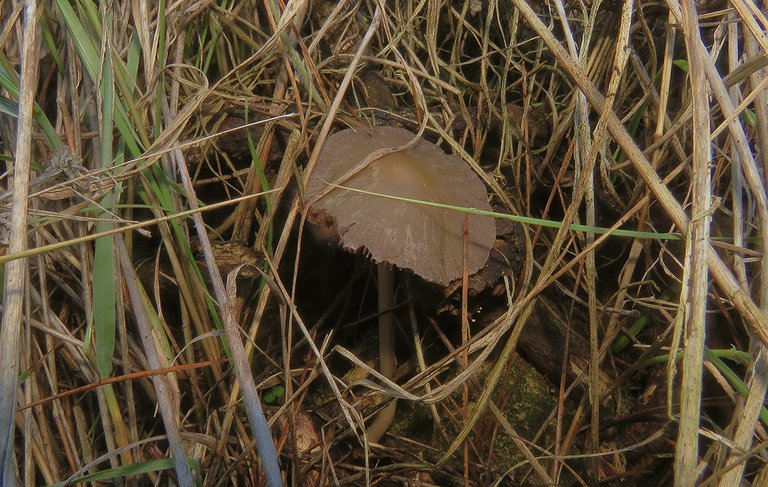
This fragile mushroom was hidden in the tall grass.
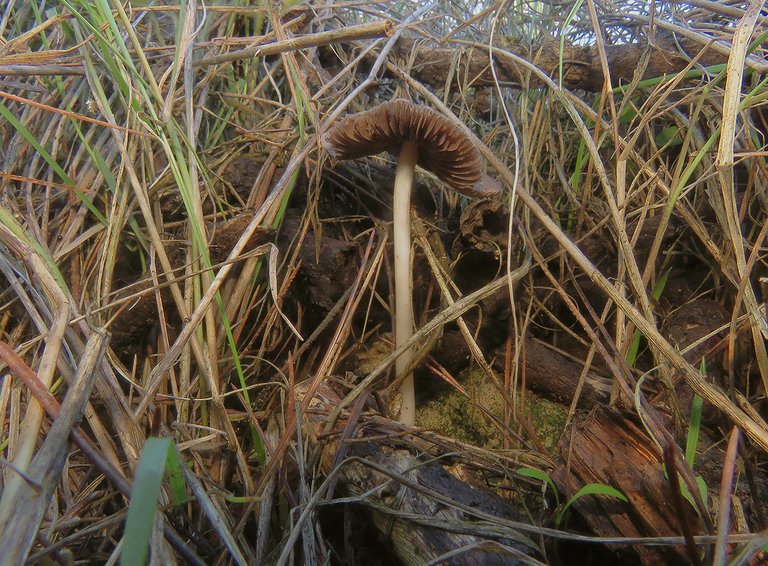
Here I put the camera down on the ground to get a shot in which the gills are visible. Can't tell you the name of the species or anything else about this mushroom.
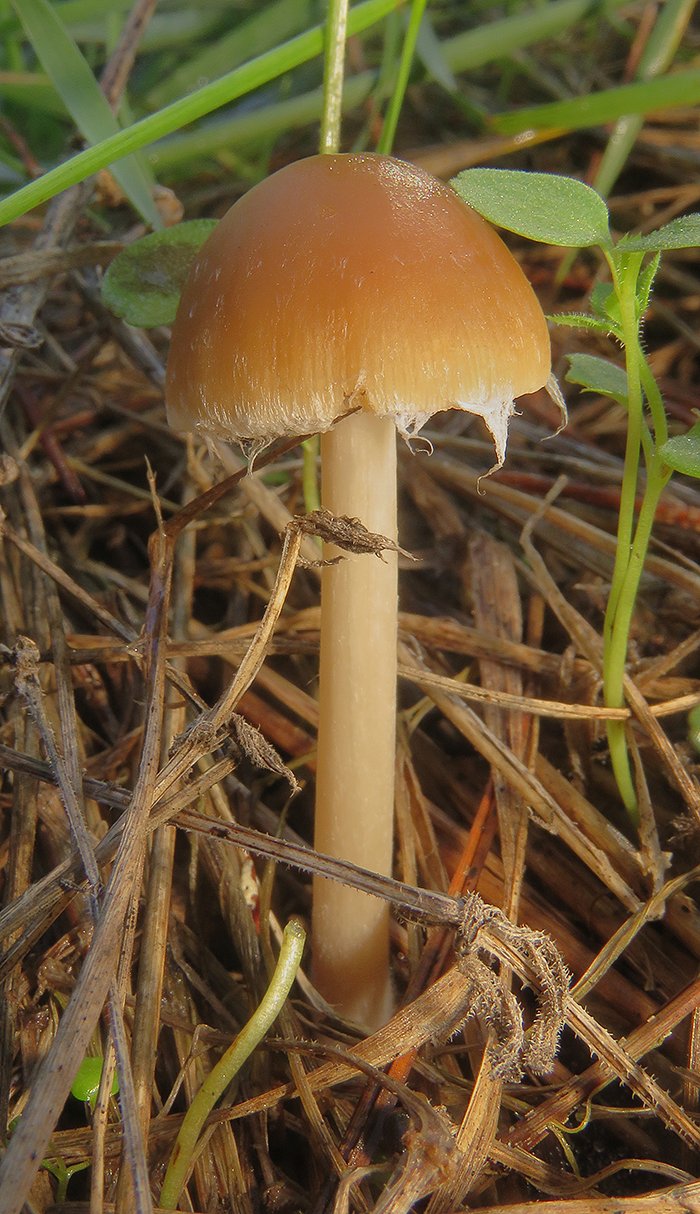
This is the Psathyrella candolleana.
The last species I photographed on that occasion.
The following links will take you to the sites with more information about some of the protagonists of this post. I found some stuff about them there.
https://www.messiah.edu/Oakes/fungi_on_wood/gilled%20fungi/species%20pages/Psathyrella%20candolleana.htm
https://www.inaturalist.org/taxa/118241-Marasmius-calhouniae/browse_photos
https://www.first-nature.com/fungi/entoloma-sericeum.php
https://en.wikipedia.org/wiki/Spiranthes_spiralis
https://en.wikipedia.org/wiki/Panaeolus_papilionaceus
https://mycena.no/seynesii.htm
HOPE YOU ENJOYED THIS LITTLE JOURNEY UNDER AND AROUND THE PINES. AS ALWAYS HERE ON HIVE, THE PHOTOGRAPHS ARE MY WORK.
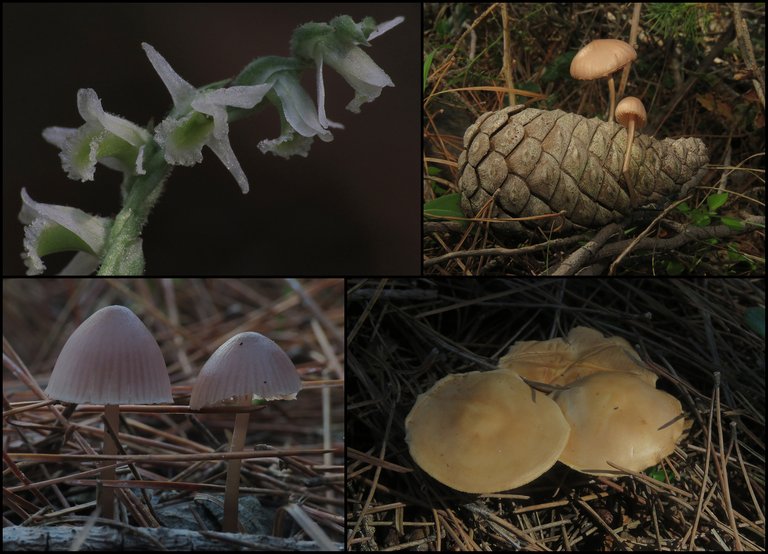
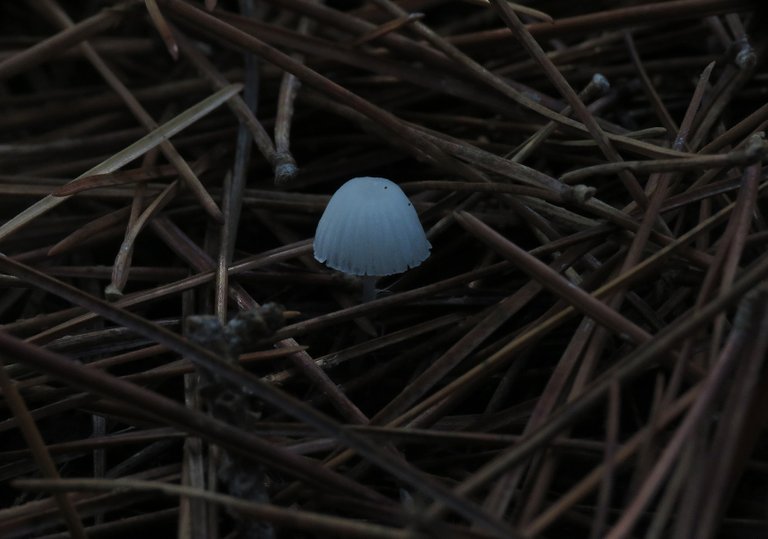
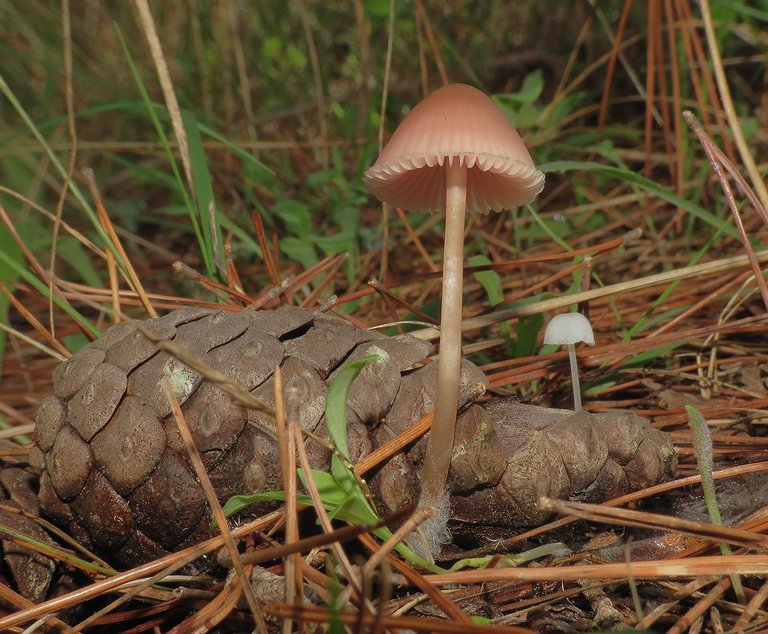
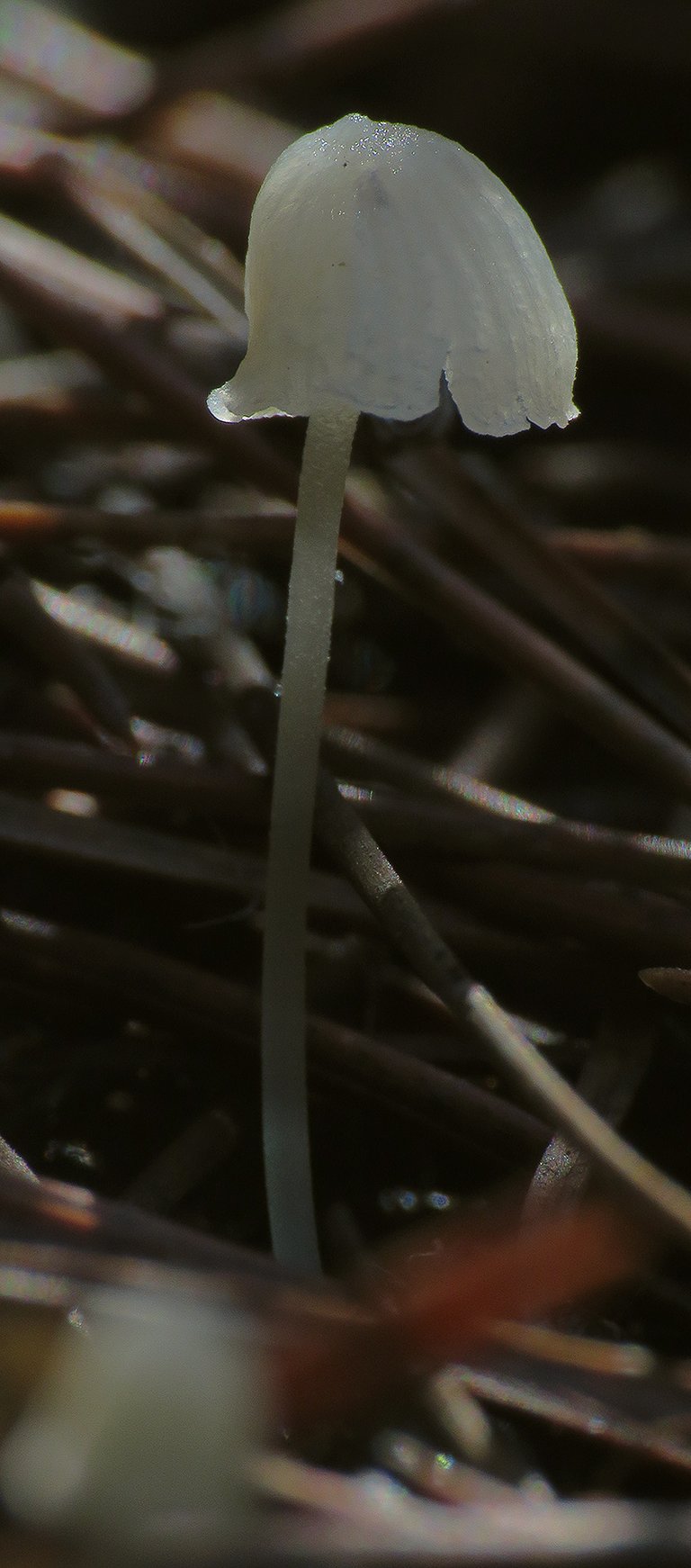
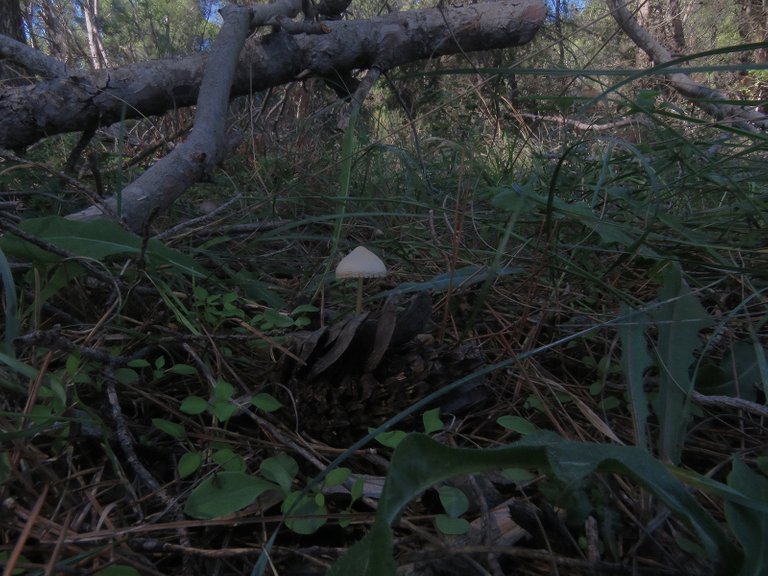
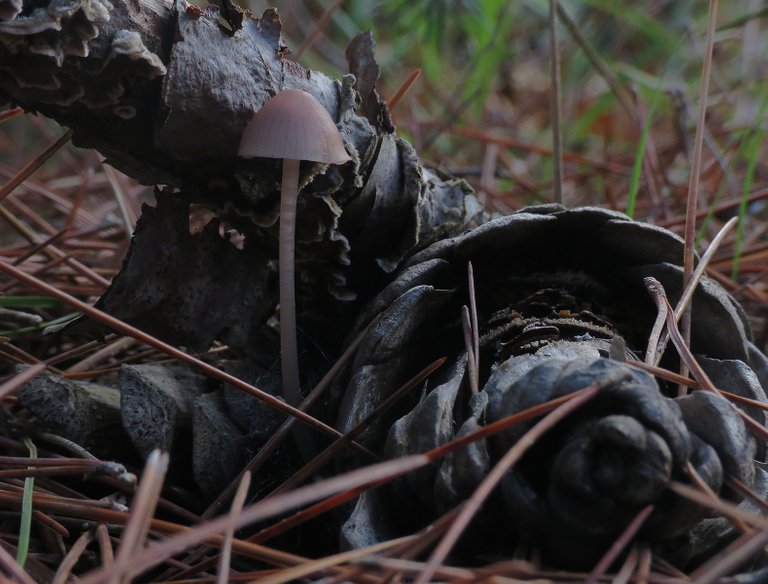
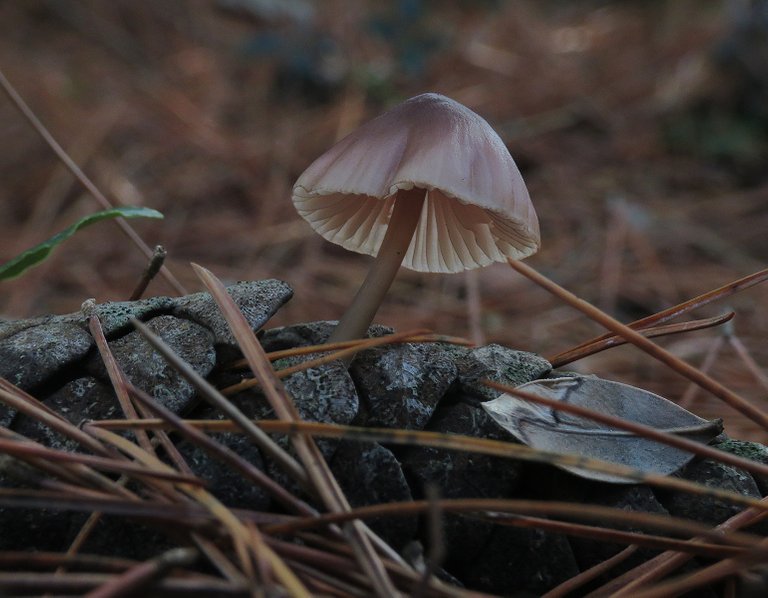
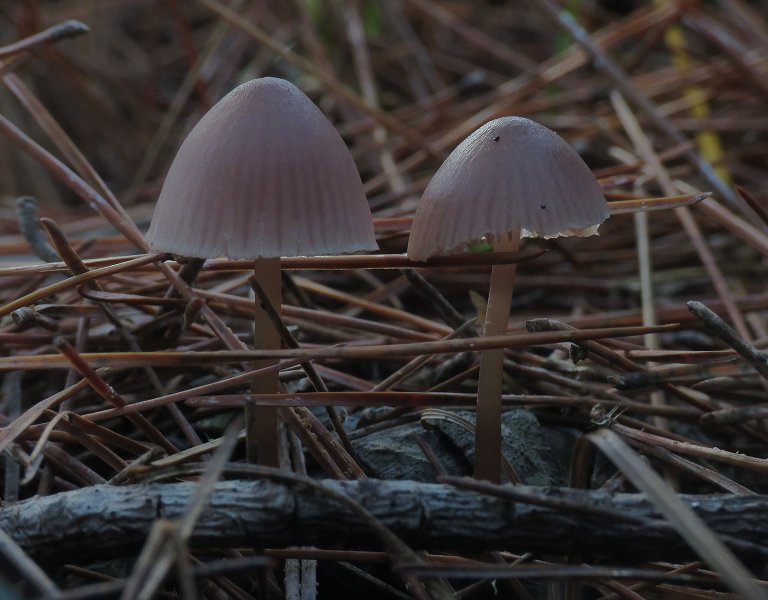
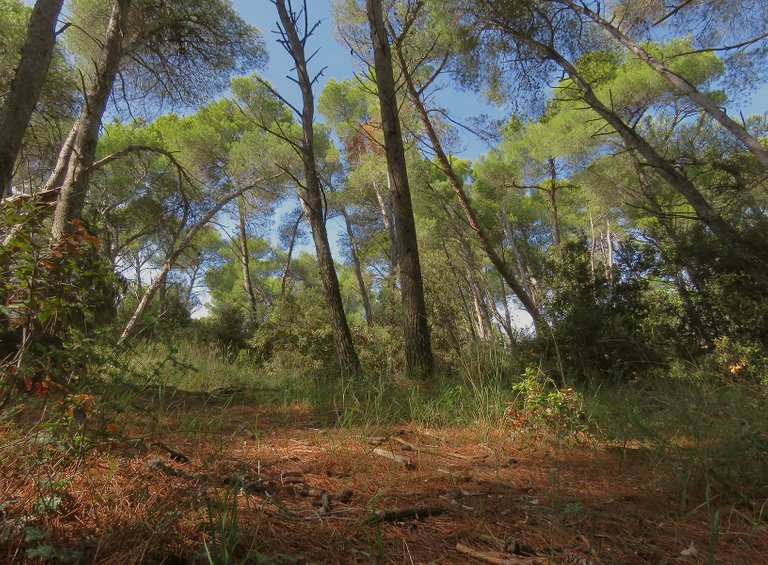
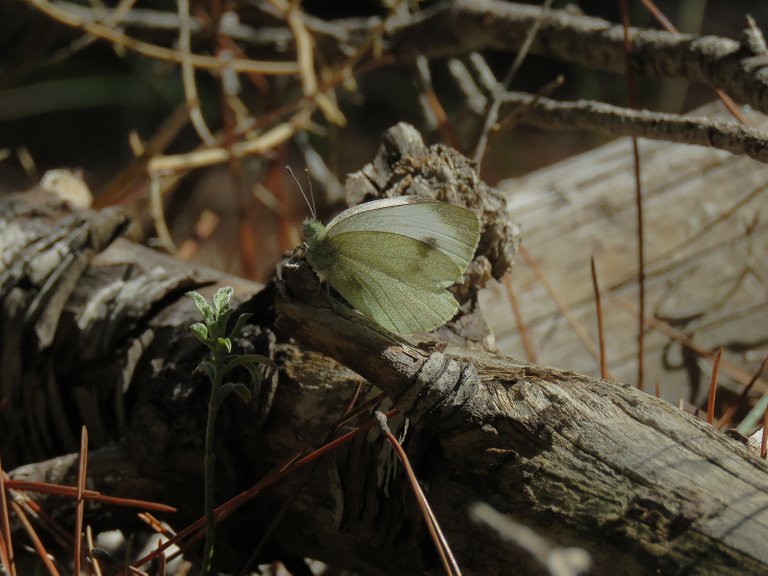
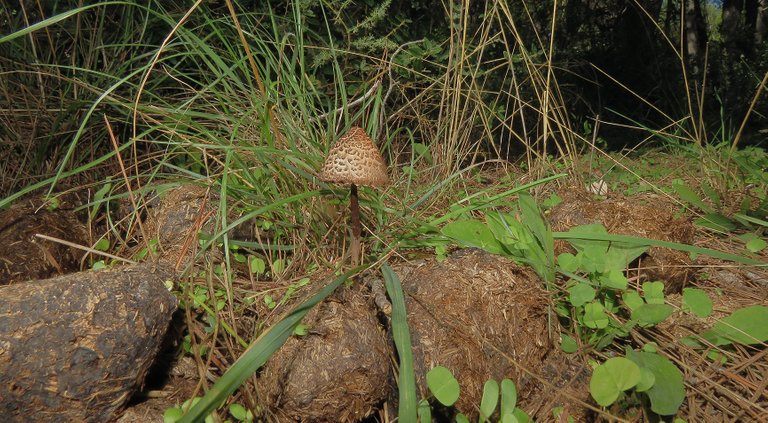

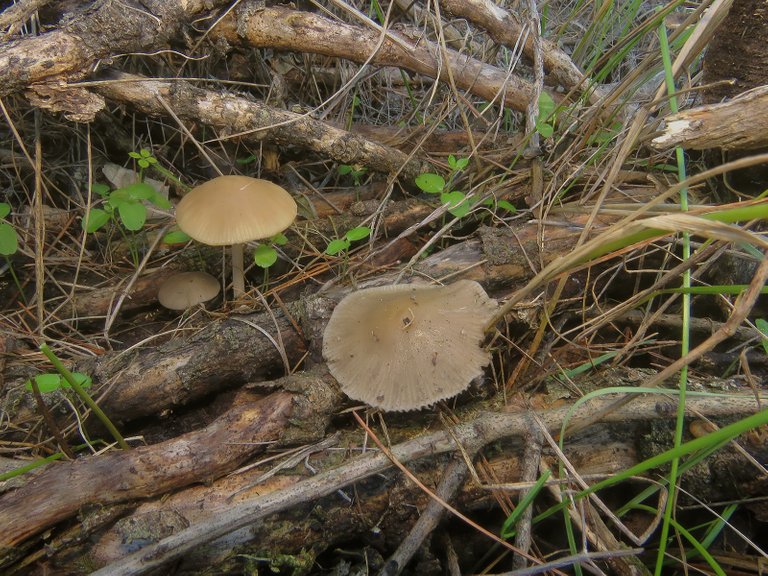
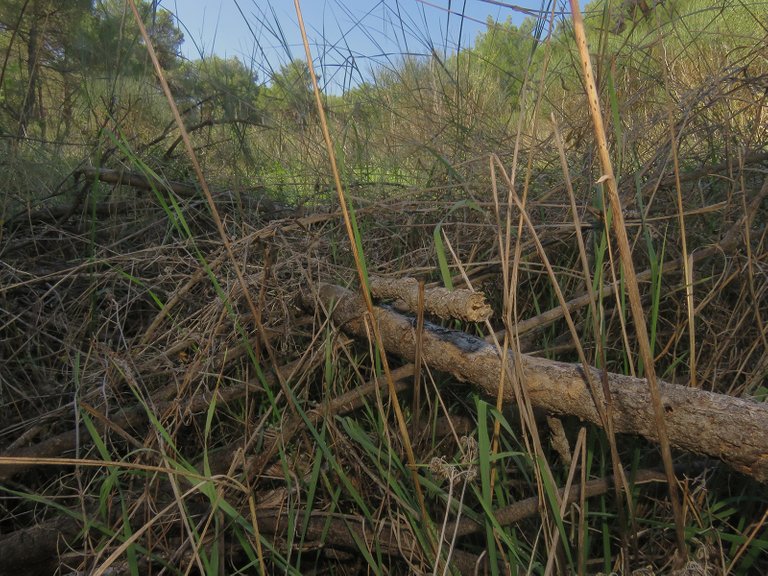
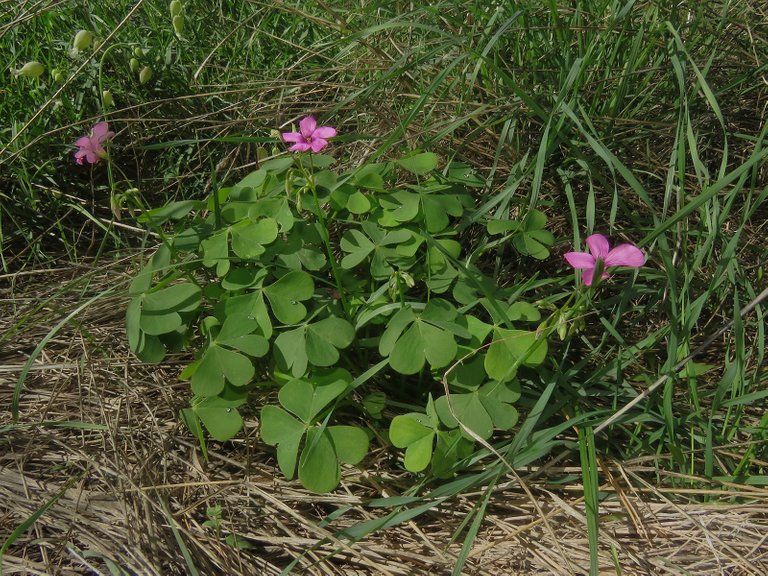
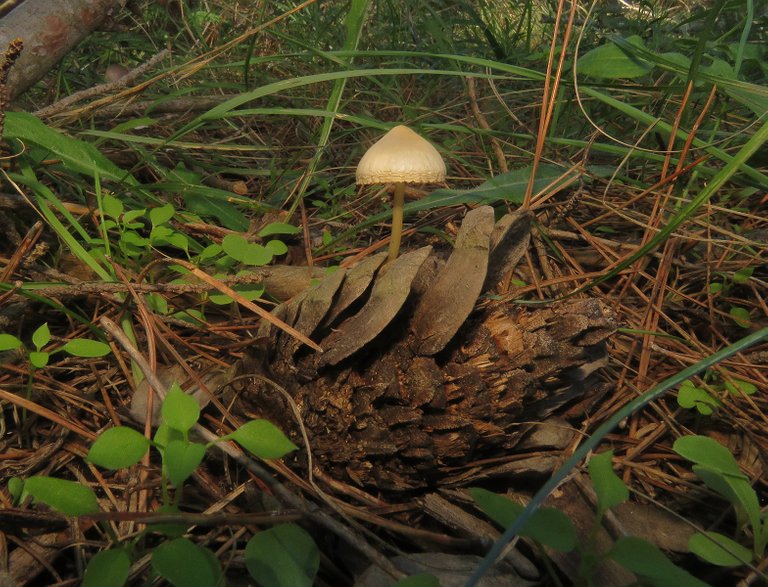


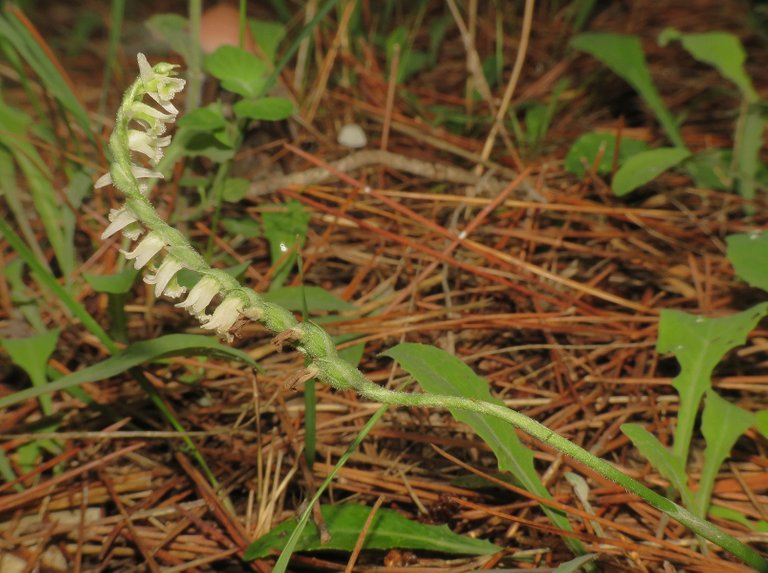


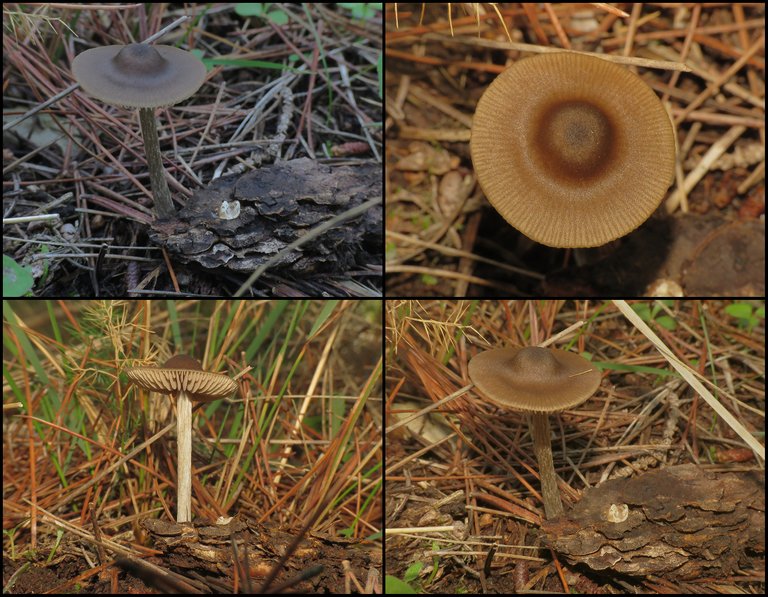
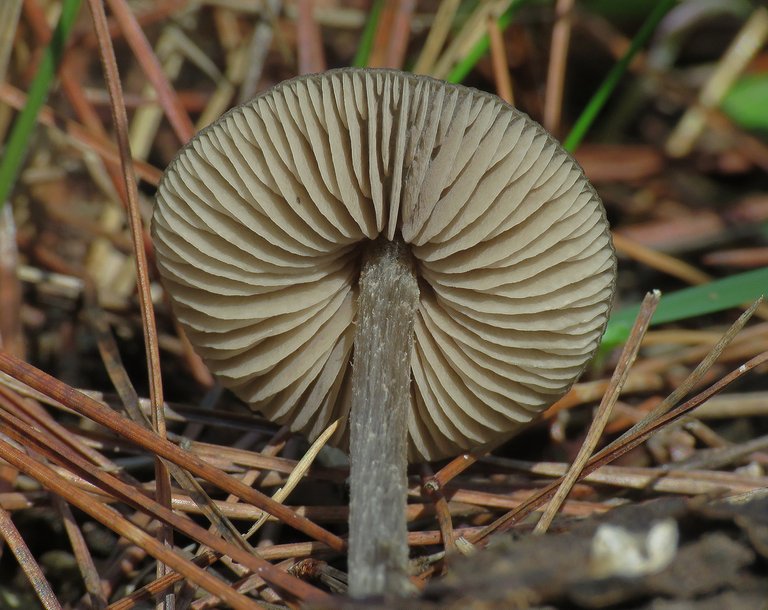

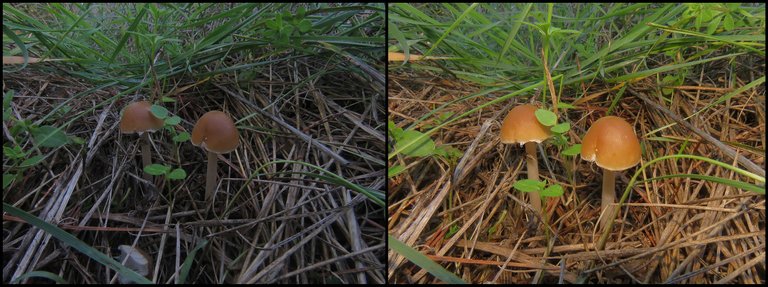
You have seen and photographed some beautiful mushrooms that are truly amazing. Sometimes we come across such beautiful mushrooms in different places which attract us a lot thanks for sharing some beautiful mushroom photography.
Another masterpiece ... how you find all this on a walk is amazing to me, but I love it!
In early autumn of 2022, the mushrooms were easy to find here. 🙂 They were everywhere.
What I mean is, most of us where I live are just hustling and bustling by ... because they are everywhere, they are not seen. I generally get out into the parks and notice our autumn flushes of larger ones, but not to the extent you do!
🙂
The mushroom is really good and beautiful
https://twitter.com/1475819111271870469/status/1613820084169867264
The rewards earned on this comment will go directly to the people( @ladytitan ) sharing the post on Twitter as long as they are registered with @poshtoken. Sign up at https://hiveposh.com.
Congratulations @borjan! You have completed the following achievement on the Hive blockchain And have been rewarded with New badge(s)
Your next target is to reach 43000 upvotes.
You can view your badges on your board and compare yourself to others in the Ranking
If you no longer want to receive notifications, reply to this comment with the word
STOPTo support your work, I also upvoted your post!
Check out our last posts:
hi sir @borjan.
You got some beautiful mushrooms in your camera, and that pink mushroom is so beautiful, it's well worth the drive to look into the pine forest and take a look around. Blessing
Your nature photo stories are true inspiration to go out and explore things around us.
Congratulations, your post has been upvoted by @dsc-r2cornell, which is the curating account for @R2cornell's Discord Community.
If you are in my area, what I do is just invite you to hunt for various things in the forest. Good job friend
Thanks. 🙂Glad you like the post.
It means you are true photographer cuz you had your macro lens and you clicked amazing photos of the mushrooms and water drop.
I love all your shots, the mushroom looks so good ..
Nature is such a blessing anywhere you see its just all magical ❤️😍
I love the Mycena Seynesii, it's so pretty but looks really fragile. That orchid is superb too, I've always loved wild orchids and the variety you find them in.
Is your car all fixed up now?
Yes. 🙂 The car is OK now.
Very nice photography of nature and mushrooms. Interesting post. greetings😊
Look how wonderful God has made!They seem to have co-existed with us but we just didn't notice these beautiful creatures!
Great work!
very interesting, the picture of the mushroom portrait is very clear and beautiful, sharing the types of mushrooms that you find is very good. I really like your post.
You found some cool mushrooms again. Your pictures are so clear, I can even see the mycelium at the joining point of mushroom and the cone. Incredble! And you found orchids again, I love these tiny flowers 😍
Every shot so excellent with beautiful nature
Mushrooms are fascinating, so many varieties, shapes and colors! I really love the smell of pine trees as they drop their cones. Lovely Nature photos as always !LOLZ
lolztoken.com
But I've got too much on my plate right now.
Credit: reddit
@borjan, I sent you an $LOLZ on behalf of @fun.farms
Farm LOLZ tokens when you Delegate Hive or Hive Tokens.
Click to delegate: 10 - 20 - 50 - 100 HP
(4/6)